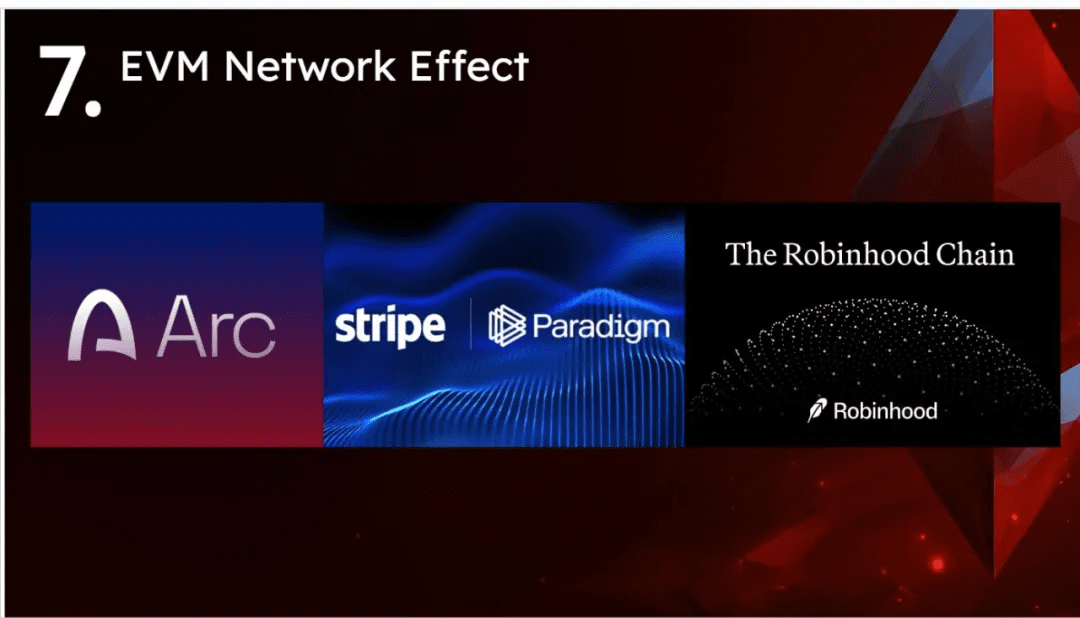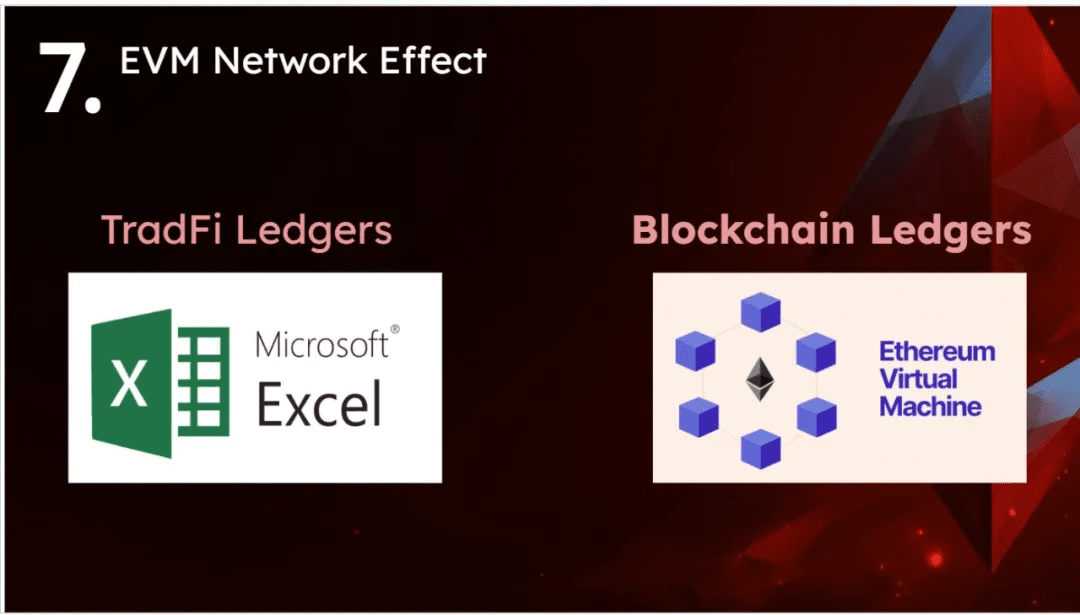Author | David Hoffman (@TrustlessState)
Compiled by Wu Talks Blockchain Aki
Disclaimer: This article is for informational sharing only and does not constitute any investment advice, nor does it represent the views and positions of Wu Talks.
Original link:
https://x.com/TrustlessState/status/1956779661683527760
The full text is as follows:
The theme of this week is the 'Enterprise Version L1' (corpo-L1s) announced by Circle and Stripe.
1. The new L1 blockchain Arc released by Circle is an EVM-compatible public chain consisting of 20 permissioned validators from regulated and trustworthy institutional alliances.
2. Stripe is developing a new L1 chain, which is expected to use Paradigm's RETH client—a high-performance Ethereum client developed in Rust. It is noteworthy that Paradigm founder Matt Huang currently serves on Stripe's board and is likely to have provided significant development support for this Stripe Chain called Tempo.
The discussions on crypto Twitter this week can almost be summarized in one sentence: Is this good or bad for cryptocurrencies? And what does it mean for 'your position'? Personally, I find 'permissioned L1' extremely dull. In my view, the value of cryptocurrencies and the 'core narrative' lies in open-source software, and Ethereum is at the center of this story. Building a 'permissioned L1' has already strayed from the main narrative of crypto, and even seems irrelevant.
In the cases of Circle and Stripe, blockchain technology is merely utilized as a database structure, and nothing more.
Will Arc and Tempo issue L1 assets?
If they do, this at least means they have the intention to promote the decentralization of the network, making these chains appear closer to what I find interesting. But for now, in the absence of further data, a reasonable judgment is that these two chains will not issue any L1 assets, but will only serve as private intranets for stablecoin settlements behind frontend applications.
There is another 'iron law' in the crypto world: if a project has the ability to issue tokens, it will eventually issue tokens (yes, I mean you, Base). So completely ruling out this possibility is actually naive and childish. If these 'enterprise-grade L1s' ultimately choose to issue tokens, it will bring them closer to an open-source, decentralized developer platform, which in my view is closer to the core narrative of crypto.
Will Stripe and Circle try to attract developers to build on their chains?
If developers cannot receive rewards or are not part owners of this 'land,' will they really be willing to build? Stripe indeed has a large developer community... but that is a Web2 developer community, mainly building Web2 frontends and e-commerce sites.
So, can this smoothly translate into promoting Web3 developers to build on Tempo? Is the value built on Tempo really higher than that built on Ethereum or any of its L2s? Perhaps these chains will remain at the 'lazy' level of permissioned consortium chains, without L1 assets, merely serving as backend business logic to replace Visa, Mastercard, and SWIFT, building their own settlement networks.
All these questions currently have no answers, and it is uncertain. Therefore, it is still too early to debate 'whether this is good or bad for BTC, ETH, SOL, or the entire crypto industry.' The only indisputable fact is that these 'enterprise-grade L1' chains are favorable to the Ethereum Virtual Machine (EVM).
This is a slide I presented during my talk at Ethereum NYC this week:

It all started with Robinhood Chain—this is the first case of a traditional financial (TradFi) company building and owning an EVM instance. Robinhood has already hired EVM developers, and now understanding the EVM has become a core competency of Robinhood's business. Now we can also add Circle and Stripe to this list, as they also introduce and manage EVM technical talents within their company structure.
The key point here is: any traditional financial company entering the crypto space must hire EVM developers. For a TradFi company, understanding the EVM is becoming the 'entry threshold' to upgrade their backend logic to the blockchain future.
Just as Microsoft Excel once supported traditional finance, today the Ethereum Virtual Machine (EVM) is becoming the talent and infrastructure that Wall Street must equip itself with—otherwise, they will face disruption from new things based on Ethereum and even lose market share.

Once you delve into the 'Ethereum rabbit hole,' you will realize that all paths ultimately lead back to the value capture of ETH, and this is one of them. Although this approach is very indirect and gentle, the expansion of the EVM empire will eventually bring value gains to the asset at its core—ETH.
Appendix: What is Ethereum EVM?
The EVM (Ethereum Virtual Machine) is a virtual computing environment that runs on the Ethereum blockchain, and you can think of it as a 'decentralized computer' running on tens of thousands of nodes worldwide. Its purpose is to allow anyone to deploy and execute smart contracts on Ethereum without trusting any central server.
In simple terms, the EVM allows Ethereum not only to transfer funds but also to execute code and run logic, creating a 'globally shared blockchain operating system.' The EVM is the runtime environment for all Ethereum smart contracts. Whenever someone calls a contract, the EVM will 'execute' the code line by line, ensuring the logic is correct and recorded on the blockchain. Ethereum accounts, balances, and the results of contract executions are all 'state changes' completed within the EVM. The EVM ensures that every change is verifiable and consistent. No matter which Ethereum node you execute the smart contract on, the EVM will produce exactly the same execution result. This is also the foundation of blockchain consensus. To prevent resource abuse, the EVM employs a Gas mechanism; the more complex the code execution and the more resources it consumes, the higher the Gas required, which users need to pay for with ETH.
At the end of 2013: Vitalik Buterin proposed the Ethereum white paper, aiming to create a universal platform that could not only transfer funds but also enable programming. In July 2015: The Ethereum mainnet officially launched, and the EVM was born. The design inspiration for the EVM comes from the 'Turing Machine'—meaning it is designed to be Turing complete and can run any complex program, just like a computer in the real world. The earliest version of the EVM was written in Solidity, using EVM bytecode for execution. Subsequently, various programming languages (Vyper, Yul) and multiple EVM-compatible chains (referred to as 'EVM-compatible chains') emerged.
Solidity smart contracts written by developers are compiled into an intermediate language (EVM bytecode), and the EVM executes these bytecode instructions one by one like a virtual CPU. The EVM uses a 'stack-based virtual machine' structure, which is more suitable for running on resource-constrained blockchain nodes than traditional memory-calling CPUs. The EVM runs in a sandboxed environment, isolating contracts from each other, which does not affect the operation of other nodes, increasing security.
The widespread adoption of the EVM has led many new public chains (such as BNB Chain, Polygon, Avalanche C-Chain, Fantom) to choose 'EVM compatibility' because developers can directly use tools available on Ethereum (like MetaMask, Remix, Hardhat), and users can easily use the same wallets and application interfaces across chains. The structure of the EVM has also promoted the development of Layer 2 (like Arbitrum, Optimism), Rollup, and other scaling technologies.
Although the EVM is powerful, it also has some limitations: low performance (limited transactions per second); the development language Solidity has security risks; bytecode is not easy to debug and optimize. Therefore, many alternatives or extensions have emerged: eWASM: After future Ethereum upgrades, it may replace the EVM with WebAssembly to enhance performance; Move, SVM (Solana), CosmWasm (Cosmos), etc., are virtual machine designs of other chains that are not compatible with the EVM.



